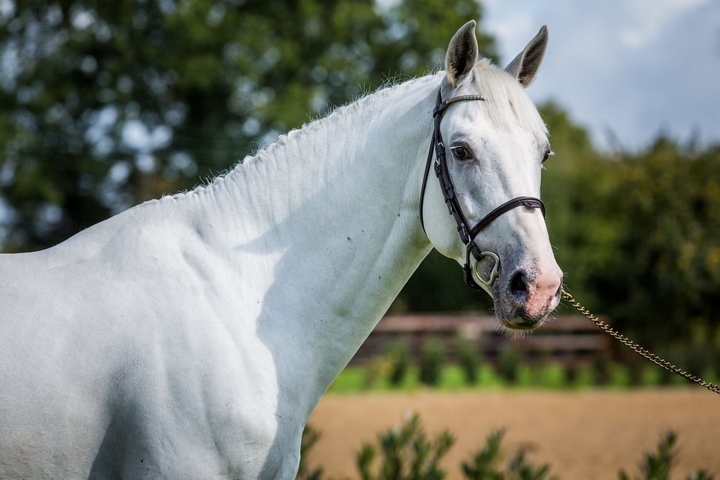PAX : The Neck
The neck is observed in natural position on a flat ground, well balance and without external stimulus.
The neck is measured between the nape of the headpiece which corresponds to the atlas and the 7th cervical (approximately 20 cm from the point of the shoulder - an open hand above the point of the shoulder in the direction of the withers.
The neck is compared with the dorsal segment which goes from the top of the withers (4th thoracic vertebra) until the top of the croup (hollow of the sacrum).
To be perfect, the length of the neck would to be equal to the back in order to balance the two segments which play a part in the trajectory during the jump.
It is not easily effective if it is too short, and can be difficult to manage if it is too long.
Determination of the neck
• The top line of the neck begins at the nape (top of the first cervical vertebra) and goes to the point of the withers (top of the 4th dorsal vertebra)
• The low line of the neck leaves the top of the throat and joined the shoulder more or less above its point.
• The neck is made up of the 7 cervical vertebrae, the seventh being between the two scapula.
Neck muscles
The neck is made up of two principal muscular groups:
• Flexors, located under the cervical vertebrae, which lowered the neck and allowed the inflection of the napeand
• Extensors, located above, which permit the opening of the nape and the neck raising.
The side inflection of the neck is done by the simultaneous contraction of these two muscular groups on only one side while those on other side are released.
The role of the neck in the jump
The neck takes part in the locomotion and plays a significant role in the form of the jump trajectory.
The lowering of the neck is done naturally by the head weight joined with the relaxation of the flexors (under the vertebrae); it is controlled by the contraction of the extensors (above vertebrae). This lowering is joined by a carryforward of weight on the forehand which relieves the haunches. It tightens the nuchal ligament and raises the back.
The rise of the nape causes the relaxation of the ligament nuchal and untense the back, it relieves the weight on the forehand.
The alternation of these movements helps the commitment of the hindlegs and give a better canter balance.
Orientation of the neck
More the neck will be naturally horizontal minus its lowering and the inflection of the nape will be effective to stretch the nuchal ligament, to elevate the back and to allow the commitment of the hindlegs.
The more vertical neck will be naturally, the less its rise and the opening of the nape will be effective to relax the nuchal ligament, to open the back and to allow an effective push of the hindlegs.
The movement of the ideal balance is neither too vertical neck, nor too horizontal.
Functional characteristics of the neck
The length of the neck plays a part in the effectiveness of the movements of the extensors and flexor. It is a weakness for the non-well orientated necks and rather an advantage for the well oriented necks.
A too long neck, especially if it is accompanied by a heavy head, makes more difficult the work of the extensors (above vertebrae) which controls the position of the head and its stability, and it give horses the forehand unbalanced.
A very short neck limits the effectiveness of its balance and makes also less effective the stretching of the nuchal ligament. It limits the role of the neck and its role to correct the trajectory of the jump.
It is for these reasons that the PAX program considers that the good length of the neck should not be too far away from the length of the back.
